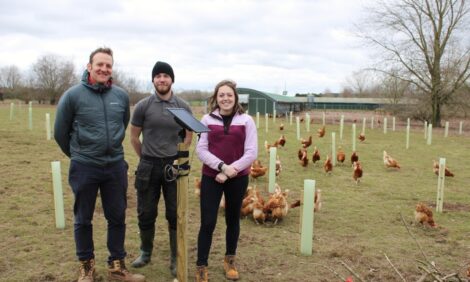



New set of forecasted extreme weather indices to better equip producers
Extreme weather conditions and events are frequent during the agricultural growing season. Developing new tools that help identify the risks to Canadian agricultural production is increasingly important.Agriculture and Agri-Food Canada (AAFC) in collaboration with Environment and Climate Change Canada (ECCC) have created a new suite of Extreme Weather Indices to help producers prepare for extreme weather conditions that are now available online.
“The incidence and frequency of extreme weather is expected to increase and with it the risks to agricultural production. Forecast products such as these help provide insights into the future risks and this is highly desired by decision makers," said Patrick Cherneski, manager National Agroclimate Information Service, Agriculture and Agri-Food Canada.
These indices, or short-term weekly forecasts for up to a month in advance, predict extreme weather factors such as temperature, heat, wind and precipitation. Within each of the categories there are numerous easy-to-read maps that will allow farmers to see weather predictions across the country that are tailored to an agriculture context.
For example, within the wind category, farmers will be able to see “Probability of Drying Day Occurrence” maps which will be particularly important during the planting and harvesting season. While during the growing season, farmers may be interested in the “Maximum Wind Speed” and “Number of Strong Wind Days” look ahead to help predict the spread of pests and when to spray.
“AAFC has been developing and providing timely weather and climate information that is relevant to the Canadian agriculture sector for more than 20 years. We are pleased to now offer tools that will help farmers look into the future," added Mr Cherneski.
Work on this project began in 2006 when the AAFC and ECCC signed an agreement to collaborate more closely together by sharing climate data. Through working with high performance computers, complex models and large datasets, the collaboration has resulted in these agriculture-specific extreme weather indices.
“This work is a good example of the positive results that can come from collaboration among scientists from different departments with common interests. It was hard work as we faced some unique challenges including identifying appropriate agricultural thresholds for extreme weather, validating the results and extensive testing to ensure accuracy for the modeled results. Going forward, we will continue to work together to improve these products by adding more indices for agriculture while increasing the ability and skill to forecast further into the future," said Dr Aston Chipanshi, analytical services manager, Agriculture and Agri-Food Canada.
Check Drought Watch frequently, as information becomes available and relevant throughout the season and new maps are uploaded on a regular basis.
Key Discoveries/Benefits
- A set of twelve extreme weather indices have been created to help producers anticipate future risks and prepare for adverse weather conditions.
- AAFC has new agroclimate-related weather forecast maps available here
- The online maps allow users to see where the forecast is expected, the magnitude and the probability of the forecast










